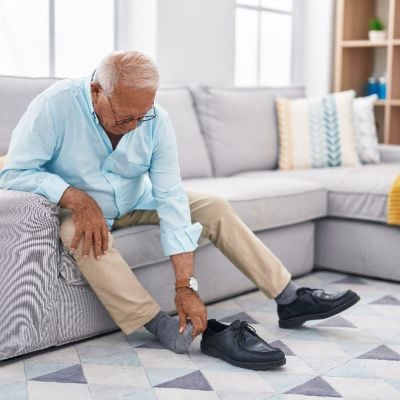 Kohler's Disease, a rare skeletal condition affecting the foot's tarsal navicular bone, is characterized by a disturbance in blood supply leading to bone necrosis. In this comprehensive article, we unravel the complexities of Kohler's Disease, examining its causes, symptoms, diagnosis, and available treatment options.
Kohler's Disease, a rare skeletal condition affecting the foot's tarsal navicular bone, is characterized by a disturbance in blood supply leading to bone necrosis. In this comprehensive article, we unravel the complexities of Kohler's Disease, examining its causes, symptoms, diagnosis, and available treatment options.
Understanding Kohler's Disease - From Causes to Onset
- Vascular Disruption: Investigating how interruptions in blood supply to the navicular bone can trigger the onset of Kohler's Disease.
- Age Demographics: Discuss the typical age range for diagnosis, which often occurs in children between 3 and 7.
Signs and Symptoms of Kohler's Disease
- Localized Foot Pain: Exploring the hallmark symptom of Kohler's Disease, which manifests as pain on the inner side of the affected foot.
- Limping and Gait Abnormalities: Describing how children with Kohler's Disease may exhibit a limp or altered gait due to discomfort.
Diagnosing Kohler's Disease
- Clinical Evaluation: Detailing the physical examination techniques healthcare professionals use to assess foot pain and gait abnormalities.
- Imaging Studies: Exploring the role of X-rays and other imaging modalities in confirming the diagnosis and evaluating bone structure.
Differential Diagnosis and Rule-Outs
- Sever's Disease: Highlighting the importance of distinguishing Kohler's Disease from other childhood foot conditions, such as Sever's Disease.
- Fractures and Trauma: Discussing the need to rule out traumatic injuries or fractures during the diagnostic process.
Natural Course and Prognosis
- Self-Resolution: Explaining how Kohler's Disease often undergoes a natural healing process as the blood supply to the navicular bone improves.
- Long-Term Outcomes: Discuss the generally favorable prognosis, with most individuals experiencing relief from symptoms as they grow older.
Conservative Management Strategies
- Orthotic Devices: Detailing the use of orthotic inserts and supportive footwear to alleviate pressure on the affected foot.
- Activity Modification: Recommending physical activity adjustments to reduce foot stress during the healing process.
Advanced Interventions for Severe Cases
- Casting and Immobilization: Exploring the use of casting to immobilize the foot and promote healing in more severe cases.
- Surgical Options: Discuss rare instances where surgical intervention may be considered, especially in persistent symptoms.
Lifestyle Modifications and Preventive Measures
- Monitoring Foot Development: Advising parents and caregivers to stay vigilant for signs of foot abnormalities in growing children.
- Regular Pediatric Check-ups: Emphasizing the importance of routine pediatric examinations to detect and address developmental issues promptly.
Conclusion
In conclusion, Kohler's Disease, though rare, requires a nuanced understanding of its origins, symptoms, and management strategies. By shedding light on this condition, we empower individuals, parents, and healthcare professionals to navigate the complexities of Kohler's Disease with knowledge and compassionate care.
Disclaimer:
The information on this website is provided for educational and information purposes only and is not medical advice. Always consult with a licensed medical provider and follow their recommendations regardless of what you read on this website. If you think you are having a medical emergency, dial 911 or go to the nearest emergency room. Links to other third-party websites are provided for your convenience only. If you decide to access any of the third-party websites, you do so entirely at your own risk and subject to the terms of use for those websites. Neither Joseph Stuto, DPM, nor any contributor to this website, makes any representation, express or implied, regarding the information provided on this website or any information you may access on a third-party website using a link. Use of this website does not establish a doctor-patient relationship. If you would like to request an appointment with a health care provider, please call our office at 718-624-7537.


